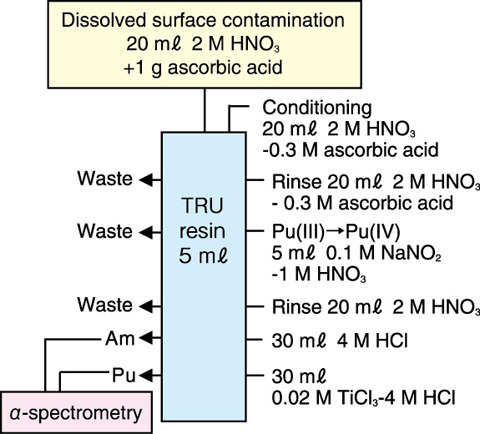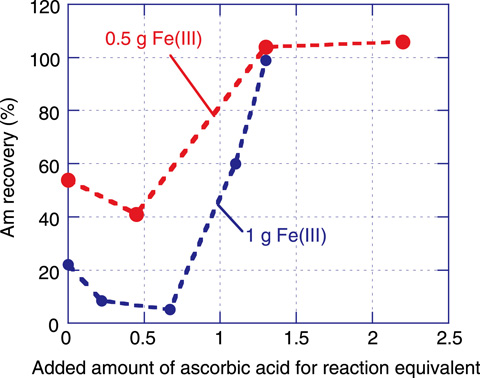Fig. 10-2 Dissolution of the contaminated surface of pipe waste sampled from Fugen

Fig.10-3 Separation of Pu and Am using a transuranium resin

Fig.10-4 Effect of the addition of ascorbic acid on Am recovery from a solution containing Fe(III)
The radioactivity of transuranium (TRU) nuclides such as neptunium-237; plutonium-238,239,240,242 (238,239,240,242Pu); americium-241,242m,243 (241,242m,243Am); and curium-244 should be evaluated before the disposal of various types of low-level radioactive wastes generated during the decommissioning of nuclear facilities.
In this study, an analytical method was developed for evaluating the amount of Pu and Am attached to the surface of the pipe sampled from the prototype advanced thermal reactor Fugen. The pipe surface was in contact with coolant water and thus contaminated by radionuclides. Pu and Am must be separated from the main components of the pipe and prepared in the form of a thin film in order to measure the α-rays from the infinitesimal quantity of Pu and Am in the contaminated specimen.
First, the contaminated pipe surface was dissolved by soaking it in an acid solution comprised of 12 M hydrochloric acid (HCl) and 13 M nitric acid (HNO3) (HCl/ HNO3/ H2O = 1:1:4) for 5 h (Fig.10-2). Next, Pu and Am were rapidly separated from the main components of the pipe via extraction chromatographic separation using a TRU resin. The TRU resin selectively extracts tri-, tetra-, and hexavalent actinides (An) from HNO3 solutions, but elutes An(III) from HCl solutions. Therefore, the dissolved solution was evaporated to dryness, and the residue was dissolved in 2 M HNO3 in order to load the TRU resin. The TRU resin extracted Pu and Am and eluted the main components of the pipe. Pu was then oxidized to Pu(IV), which remained on the resin, and Am was recovered in an HCl solution. Next, Pu(IV) was reduced to Pu(III) using TiCl3 and recovered in an HCl solution (Fig.10-3).
In this scheme, the trivalent iron (Fe(III)) in the sample solution must be reduced to Fe(II) because a large amount of Fe(III) will interfere with the extraction of Am(III). Thus, we studied the effect of the addition of ascorbic acid on Am recovery from 20 mL of a 2 M HNO3 solution containing 0.5 or 1 g of Fe(III) (prepared using Fe(NO3)36H2O). Approximately 100% Am recovery was achieved with the addition of 1.3 equivalents of ascorbic acid (Fig.10-4).
Finally, the Pu and Am attached to the pipe (six specimens) sampled from Fugen were analyzed using the above-described method. In one of the specimens, 1.6 × 10-5 Bq/g of 239+240Pu was detected, but the other isotopes were present in quantities lower than the detection limit (< 2.8 × 10-6 Bq/g of 238Pu, < 3.0 × 10-6 Bq/g of 239+240Pu, and < 2.9 × 10-6 Bq/g of 241Am). In addition, a high recovery for Pu and Am (94%∼101% and 85%∼93%, respectively) was achieved in the experiments using samples containing known amounts of radioisotopes.
<Previous: 10 Development of Decommissioning and Radwaste Treatment Technology | Next: 10-2 >